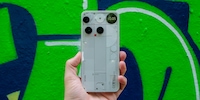
Product test
Review: the Nothing Phone (3) is hot on the heels of top-of-the-range smartphones
by Jan Johannsen

With more cooling than other smartphones, RGB lighting and additional controllers, the ROG Phone 7 aims to win over Android gamers.
Asus has brought out the seventh iteration of its gaming smartphone. The ROG Phone 7 has top hardware and numerous gimmicks meant to make gamer hearts beat faster. Now, if you’re not worried about the temperature of your phone, find RGB lighting annoying and don’t need additional buttons for gaming – don’t bother with this device.
From the design up, Asus leaves no doubt that the ROG Phone 7 is a gaming phone. Bulky, dark elements are complemented by red highlights and two RGB elements on the back. The plastic housing is water-resistant according to IP54.
On the front side is a screen that – apart from its size – could pass for a gaming monitor. The maximum refresh rate is 165 hertz, and the maximum brightness is 1,500 nits, though it typically stays within up to 1,000 nits. The 6.78-inch AMOLED display offers a resolution of 2,448 × 1,080 pixels. All this to say, if you can’t recognise game characters somewhere off in the distance, it’s only due to the overall size of the touchscreen.
In terms of colour reproduction, Asus meets high standards. The display is certified for HDR10+ and covers 111 per cent of the DCI-P3 colour space, with a Delta E value of <1.
The ROG Phone 7 is equipped with a Snapdragon 8 Gen 2 as well as 12 or 16 gigabytes of working memory. That’s enough power for all current Android games. With this hardware, the smartphone should even be capable of ray tracing. However, games that support realistic light rendering are still in development and not publicly available.
Compared to its predecessor (the ROG Phone 6), the ROG Phone 7 is said to offer 15 per cent more CPU performance and 20 per cent more GPU performance, all while using 15 per cent less power. That sounds great, but these are the general benchmarks Qualcomm has issued for Snapdragon 8 Gen 2 and Snapdragon 8+ Gen 1.
For this reason, it’s worth comparing other smartphones with Snapdragon 8 Gen 2.
What do we see? While the ROG Phone 7 belongs to the top group, it doesn’t deliver the best performance in any single test. In fact, the Galaxy S23 Ultra pulls ahead of the gaming smartphone in all scores.
But Asus has a trick up its sleeve: X Mode. With it enabled, the ROG Phone 7 gets a bit more performance out of its hardware.
With X Mode, the ROG Phone 7 takes the crown in both the single and multi-core CPU benchmarks. Only in the graphics interface OpenCL does the Galaxy S23 Ultra still have the lead – but by a much smaller margin.
Other benchmarks confirm the performance increase thanks to X Mode. In the PCMark Work 3.0 performance test, for example, the score goes up from 13,197 to 19,076 points.
In terms of performance, the ROG Phone 7 doesn’t seem to have an advantage over other smartphones with the same hardware. However, the benchmarks offer only a momentary snapshot. The longer you heavily use a smartphone, the warmer it gets. It may then have to throttle its power. In order to avoid this for as long as possible, Asus relies on a sophisticated cooling system.
It consists of several heat sinks that surround the batteries and processor. The heat itself is dissipated in the rapid-cycle vapour chamber. A new Y-shaped structure inside is supposed to dissipate heat 2.1 times better. Asus claims to have increased cooling efficiency by 168 per cent. Sounds good, but I’ve no way of measuring it. All I can say is that the ROG Phone 7 feels cooler than other smartphones when gaming.
However, the internal cooling seems to reach its limits when gaming for more than an hour. When gaming for longer periods of time, Asus recommends using the AeroActive Cooler 7.
The AeroActive Cooler not only has a fan, but also adds four buttons and a mini subwoofer to the ROG Phone 7. In addition, it functions as a phone stand.
On the back of the phone, I can feel the air on my fingers as it moves through the AeroActive Cooler. Asus states the cooler can cool the back of the ROG Phone by up to 25 degrees Celsius and the front by up to 7 degrees Celsius.
One small drawback? The AeroActive Cooler gets its power from the smartphone’s USB-C port on the side, shortening battery life. But the cooler does
have its own USB-C port and 3.5-mm audio jack.
The AeroActive Cooler’s fan is ever so slightly audible when gaming. Depending on the required cooling performance, it can get louder – but gaming sounds will typically drown it out.
All four buttons on the AeroActive Cooler 7 can be configured for different actions via the ROG Phone 7’s software, depending on the game. They’re reliable and have clear trigger points, but I’m not a fan. Why? Because I have to choose between holding the display so that I can look at it comfortably or reach the buttons comfortably. I can’t manage both simultaneously.
Furthermore, the AeroActive Cooler 7 is the first external cooler from Asus with an integrated subwoofer. Sound comes out of the side of the cooler, complementing the two speakers on the front of the smartphone with bass. The result is a more voluminous sound that approaches a small Bluetooth speaker.
There’s a version of the ROG Phone 7 that offers even more cooling. The ROG Phone 7 Ultimate only comes in white and differs from the standard version by two things: an OLED display on the back, the content of which you determine, and the AeroActive Portal. The latter is an additional opening on the back that, together with the AeroActive Cooler, is supposed to let even more air flow into the smartphone for cooling.
Even with the Aeroactive Portal open, the ROG Phone 7 Ultimate still has IPX4 splash protection. The hatch is supposed to withstand being opened at least 40,000 times.
The ROG Phone 7 comes with Android 13 and ROG UI. Alternatively, you can choose ZEN UI, which Asus uses for its non-gaming smartphones like the Zenfone 9. The biggest innovation is that you can now combine elements from different themes in ROG UI.
The update promise, on the other hand, is a downside; the ROG Phone 7 is only guaranteed two major Android updates, namely Android 14 and 15. Other manufacturers offer more. However, Asus does at least promise security updates for four years.
Asus promises high performance with X Mode, while claiming to have balanced its power consumption. However, it’s likely higher than in normal operation. After all, the mode aims for 60 fps, which in turn makes the display’s maximum of 165 hertz look like a bit much. Asus also claims to use all processing cores for game rendering.
Armoury Crate includes a detailed list of Android games with links leading you straight to the Play Store. For each game, Asus has noted if it supports AirTrigger or external controllers and what its maximum frame rate is.
Game Genie is what Asus calls the overlay console you can open while a game is running in full-screen mode. It allows you to adjust numerous settings in just a few clicks, from the performance mode to notifications to the AirTrigger or AeroActive Cooler.
Asus has added several new features to Game Genie with the ROG Phone 7, including X Sense, where an AI is supposed to recognise events in games and provide tips via pop-ups. That sounds like something for people who’d otherwise open up a game guide. This feature currently seems to only be available for one game in select countries in Asia.
X Capture, on the other hand, sounds more helpful. It also relies on AI and is supposed to recognise special moments (in selected games) and automatically create video clips of them. If this is reliable, it’ll save you having to run a screen recording the entire time to create a highlight video.
The AirTriggers are two additional buttons on the top edge of the ROG Phone 7. If you hold the smartphone in landscape mode, you can reach them with your index fingers. This allows you to see more of the game, since you don’t necessarily have to rely on touch controls.
You set up the AirTrigger controls in Game Genie. You can specify where the keys trigger a virtual finger press. The AirTrigger’s ultrasonic sensors detect touch reliably and quickly. They can also recognise nine different gestures, such as swiping as well as pressing and holding. All this gives you further control options for games.
The AirTriggers work perfectly. I find them much more convenient to use than the buttons on the AeroActive Cooler. With my index fingers tapping the edge of the phone, I can tap the touchscreen with my thumbs. However, this effectively cancels out the theoretical advantage of more screen real estate, not to mention it’s difficult to reach the centre of the display.
In addition, how well the AirTrigger controls can be integrated varies greatly from game to game. I can’t map the five different attacks in Diablo Immortal onto the AirTriggers. When I only need the gas and brake in Asphalt 9, the controls work better.
Asus has equipped the ROG Phone 7 with two 3,000 mAh batteries. With the right charger, the total battery capacity of 6,000 mAh should be full in 42 minutes. This requires at least 65 watts with a power supply that supports PowerDelivery 3.0 or QuickCharge 5.0. A power adapter like this is included with the smartphone.
According to Asus, wireless charging has been omitted in order to use the space for better cooling and larger batteries.
After about three hours of gaming, the battery of the ROG Phone 7 is down about 50% of its charge. However, this is only an indication of how long the smartphone can last – it depends on the display brightness and volume, among other things. Connecting the AeroActive Cooler will further reduce battery life.
For comparison, I ran PCMark’s Battery Life test, the Work 3.0, on the ROG Phone 7, the Galaxy S23 Ultra and the Xiaomi 13 Pro.
Unsurprisingly, the ROG Phone 7 lasts the longest with its largest battery. Looking at efficiency – measured in mAh per minute – the Galaxy S23 Ultra is the top dog with 7.99 mAh per minute, followed by the ROG Phone 7 with 8.77 mAh per minute and the Xiaomi 13 Pro with 9.51 mAh per minute.
The ROG Phone 7 has two USB-C ports you can use for charging: the classic one located at the bottom and one on the side. The latter is especially handy if you want to continue playing in landscape mode while charging the battery, as it keeps the cable out of the way.
In general, the recommendation is not to game on the smartphone while charging to avoid overheating. However, Asus has equipped the ROG Phone 7 with a technology called bypass charging, which allows the current from the charging cable to bypass the battery and be used directly instead.
You can connect headphones via the 3.5-mm jack or Bluetooth 5.2. The ROG Phone 7 supports Wi-Fi 6E and has three antennas. Its components make it Wi-Fi 7 ready.
The ROG Phone 7’s two speakers are oriented towards the front. So, you don’t run the risk of covering them with your hands while playing, as can easily happen with speakers built into the frame. This alone results in better sound than on most other smartphones.
If you use headphones, this phone offers an extensive portfolio of supported codecs and technologies, ranging from Spatial Sound and Dirac Virtuo to Hi-Res Audio (wireless) and aptX (lossless) to Snapdragon Sound.
The ROG Phone isn’t purely a gaming device. You can also use it as a smartphone with numerous Android apps. Of course, it’s also got cameras built in. Asus has installed a 50-megapixel main camera with the Sony IMX766 sensor on the back. Which sensors are in the 13-megapixel ultra-wide-angle and the 8-megapixel macro camera? Why, the manufacturer doesn’t say. Regardless, it still touts the setup as the «best camera in a ROG phone».
When exactly the macro camera becomes active, I can only guess; there’s no macro mode in the camera app that would allow me to select it. Overall, the camera app has few modes and settings compared to other smartphones.
In daylight, the colour reproduction looks natural and the camera copes well with strong contrasts. However, other smartphones manage the HDR effect better and make the colours look even more vivid and saturated.
The sharpness decreases a bit in the corners, though only close to the edge. So, overall, detail is not bad – at least when the subject is close by.
If the subject is standing a few metres away, as in the following pictures, the level of detail in the background decreases significantly. For example, the houses are pixelated. Apart from that, the ultra-wide-angle camera also offers natural-looking, though somewhat restrained, colours in daylight. Lens distortion is calculated and removed by the software.
The ROG Phone 7 only offers digital zoom, or rather, it takes advantage of the high resolution of the main sensor; you can «zoom into» the 50 megapixels, so to speak. This provides a higher level of detail of the houses in the background than you’d get by taking a standard photo with the main camera.
Night mode makes a big difference in the dark. However, it brightens the shots too much for my taste. The charm of the night is lost in the process.
The front camera of the ROG Phone 7 technically has a resolution of 32 megapixels. However, it merges four pixels into one for selfies, effectively resulting in a resolution of eight megapixels.
I think I look true-to-life in the selfies, but already appear pixelated in full-size view. The background doesn’t look out of focus due to depth of field; it also just looks pixelated. And me? I look like someone copy and pasted me into the image. These selfies are anything but pretty. And they get even worse in the dark.
The ROG Phone 7 doesn’t aim to please the masses. It’s tailored to a target group that likes RGB lighting, cares about cooling and gets excited about additional buttons.
Apart from the mediocre camera, the installed hardware is beyond reproach and lies squarely in the current top class. Asus has adapted the software well to gaming needs. In addition, there are several handy features for gaming – though they haven’t all won me over, like the buttons on the AeroActive Cooler.
There’s a little problem for Asus: other top phones have the same CPU and excellent displays, too – and better cameras. Other manufacturers do also offer gaming modes that optimise performance and silence notifications. With that, only the hardcore cooling and gaming gimmicks like the AirTrigger controls, the USB port on the side and the RGB lighting are unique selling points for the ROG Phone 7.
Header image: Jan JohannsenWhen I was but a young student, I'd sit in my friend's living room with all my classmates and play on his SuperNES. Since then I've had the opportunity to test out all the newest technology for you. I've done reviews at Curved, Computer Bild and Netzwelt, and have now arrived at Galaxus.de.
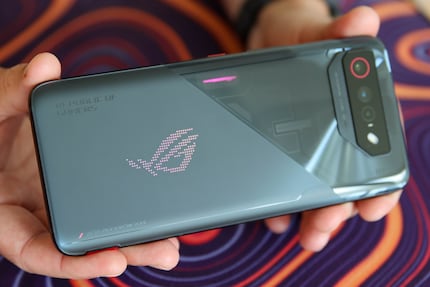
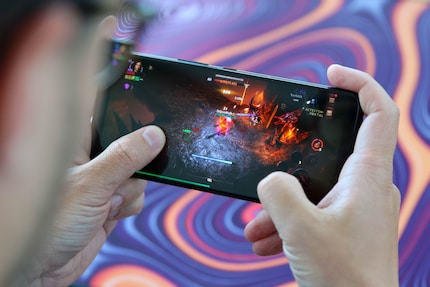
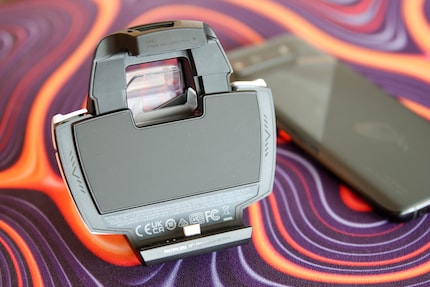
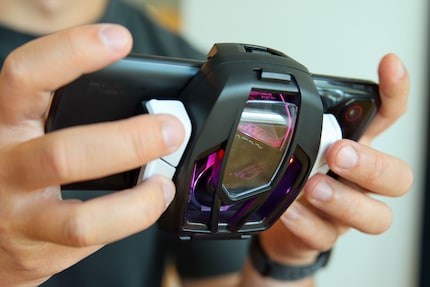

ASUS ROG Phone 7 Ultimate
512 GB, Storm White, 6.78", Dual SIM, 5G
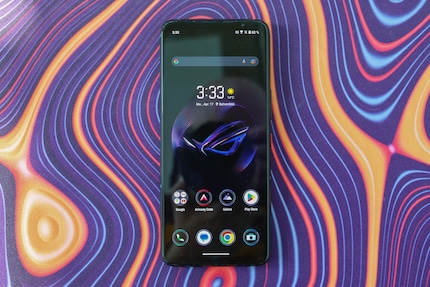
With Armoury Crate, Asus offers a comprehensive gaming management software that goes by the same name on smartphone as on PC. You can create profiles for different games, control the RGB lighting and manage the AeroActive Cooler. In the app, you can also choose between three performance modes: X Mode for more power, Dynamic for a balanced profile, and Ultra Durable for the longest possible battery life. X Mode can also be activated via quick settings, but not the other two modes.
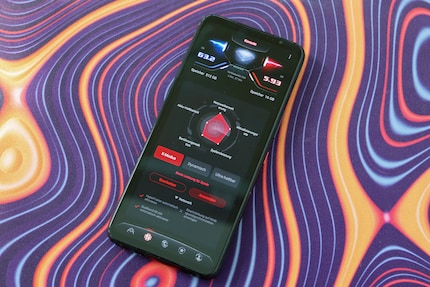
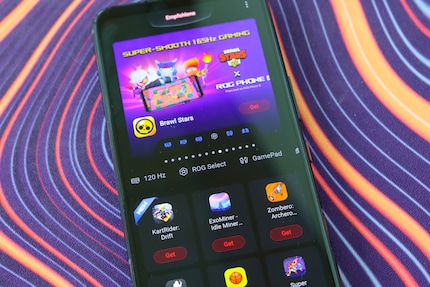
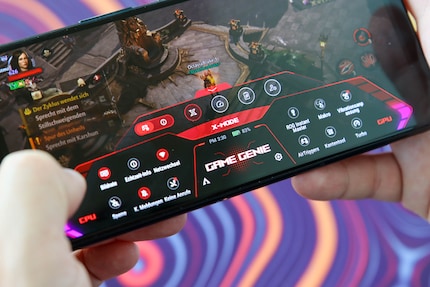
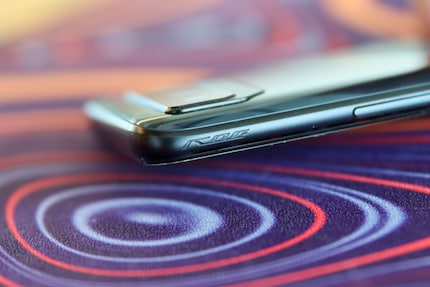
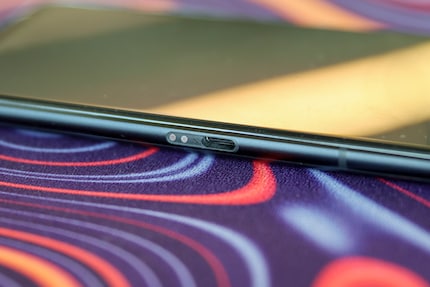
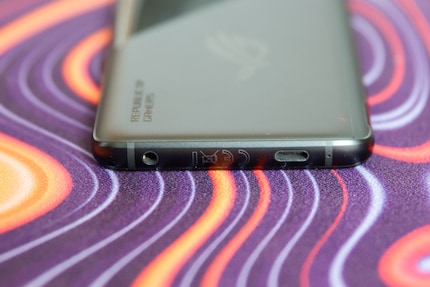
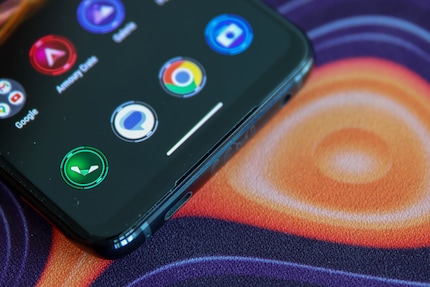
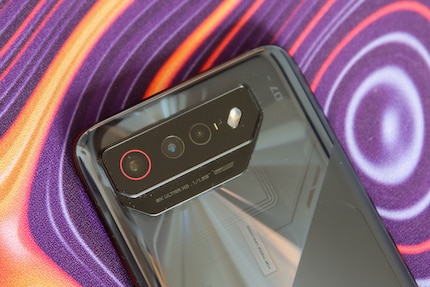





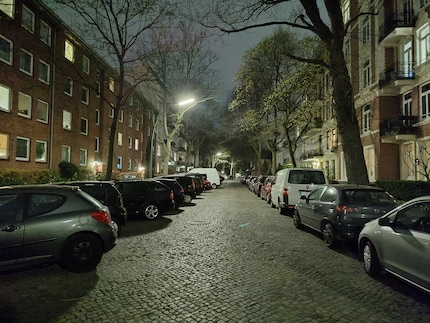


But is it all worth it for Android games? Given this is the seventh edition of Asus’s gaming phone, the answer seems to be «yes!» Still, the Nintendo Switch and new gaming handhelds from other manufacturers and Asus itself are serious alternatives to the ROG Phone 7. While the ROG Phone 7 isn’t more expensive than other top smartphones, you can still treat yourself to both a handheld and a good mid-range smartphone for the same price.